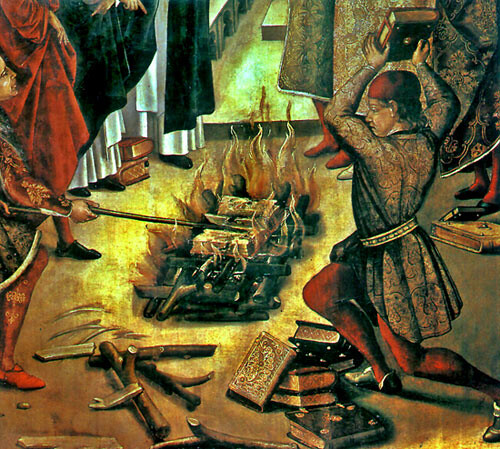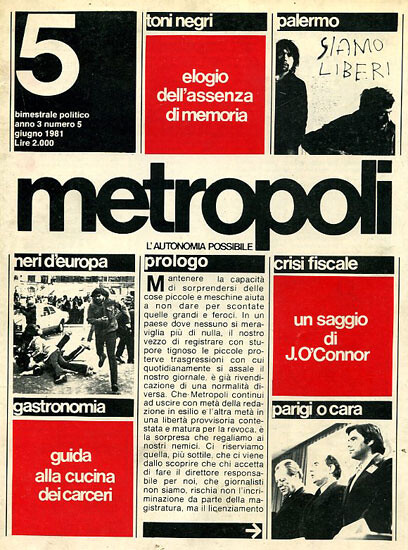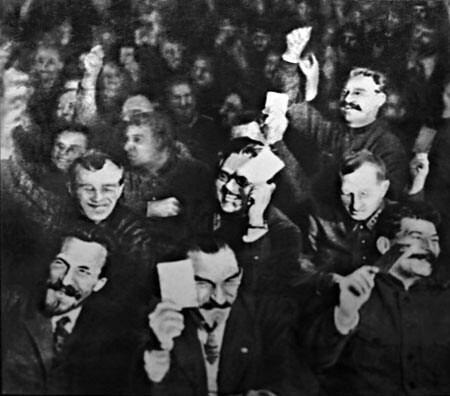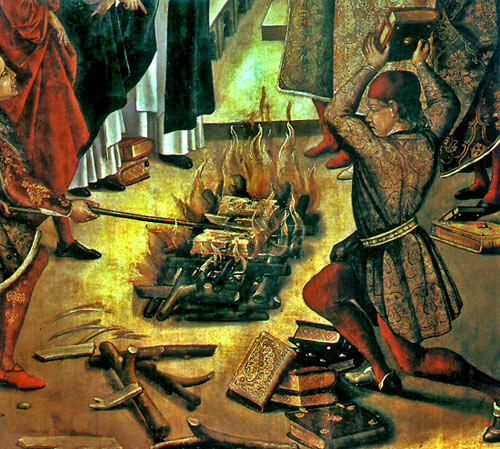Continued from “Circulation and Withdrawal, Part 1: Circulation”
Nothing is less passive than the act of fleeing, of exiting. Defection modifies the conditions within which the struggle takes place, rather than presupposing those conditions to be an unalterable horizon; it modifies the context within which a problem has arisen, rather than facing this problem by opting for one or the other of the provided alternatives. In short, exit consists of unrestrained invention which alters the rules of the game and throws the adversary completely off balance.1
—Paolo Virno
There may not be a notion in recent aesthetic and political discourse that has been more romanticized and problematized than the notion of an exit or a withdrawal, or as it is often described, exodus. It is, however, often exaggerated and misunderstood in the usage of it as the possibility to escape hegemonic social structures, or even the effects of capital itself. This originates, famously and notoriously, from Michael Hardt and Antonio Negri’s use of exodus as equivalent to desertion and nomadism in resistance strategies, or what they call “Being-Against” in Empire: “Whereas in the disciplinary era sabotage was the fundamental notion of resistance, in the era of imperial control it may be desertion,” and, moreover, “this desertion does not have a place; it is the evacuation of the places of power.”2 Withdrawal here is directly political, and supplants previous models of resistance such as sabotage, and it is implied that rather than fighting power head-on, or if you will, the centers of power, symbolically and physically, one must instead withdraw from power, walk away from the structures and subjectivities of contemporary capital. Furthermore, if in the networked society it is not easy to define the exact locations of power, one can, presumably, always find exit ways and loopholes in the network itself, in the seemingly totalizing system that is Empire. Tactically and politically, Hardt and Negri thus conflate three different forms of mobility under the rubric of withdrawal: nomadism, desertion, and exodus. If these types of withdrawal belong to different subjects in different spatiotemporal configurations, they are here united in order to create a contemporary form of class struggle, even if it is a double movement that both, positively, “pushes from behind,” and, negatively, “pulls forward.”3


Hardt and Negri have, quite rightly, been criticized for this somewhat romantic construction, for suggesting that one can combat power by abandoning it (do the relations and rules of power ever really leave you?), and for seeing nomadism and exodus as the same movement, making refugees similar to conscientious objectors. For this reason alone, one would hesitate to invoke withdrawal. But exodus has religious overtones which are highly objectionable, and more neutral terms like “exit” or “withdrawal” are useful, at least in the present discussion. Now, as an historical argument, the case for exit or withdrawal draws on Deleuze’s reading of Foucault, and the suggestion that disciplinary regimes have turned into a society of control, what they call the “imperial.” But, crucially, contrary to Deleuze, control and discipline do not compliment each other; instead, one succeeds the other. This is, presumably, also the reason why they see sabotage and withdrawal as two different strategies, whereas in the guerrilla tactics they have likely taken the terms from, these would always, and inevitably, go hand in hand, as surge and retreat, attack and exit. Indeed exit, as proposed by Paolo Virno rather than exodus, may be the preferable term, since it indicates a shift from a religious imagery to both a military deployment and everyday language, and, as quoted in the epigraph, exit as fleeing does not have to do with passivity, but with tactics, and with maneuvers that change the rules of the game, or at the very least break them.


For Virno, the notion of exit is connected to the term “civil disobedience,” as acts of not only protest, but also of active refusal to participate in the surplus production and exploitation of labor under the conditions of capital. It is not, however, unproductive; rather, “exit hinges on a latent kind of wealth” and “an exuberance of possibilities” for producing value that is not accountable, not transformable into cultural entrepreneurship.4 This is, of course, the question that faces all critical magazines, not only in the way they often employ an extended use of unpaid labor, not in a sense of exploitation, but as rather a removal of both work time and free time from surplus production. In order to create criticality, withdrawal is necessary, not as an inactivity, but as an alternative production of value and meaning:
Defection allows for a dramatic, autonomous, and affirmative expression of this surplus; and in this way it impedes the “transfer” of this surplus into the power of state administration, it impedes its configuration as productive resource of the capitalistic enterprise.5
This withdrawal is, as we shall see, simultaneously contradicted by circulation, partly in terms of which reach and which constituency the magazine has and wants, as well as in how it deals with the inevitable production of surplus that occurs with increased circulation. The question here is one of sustainability, both economically and intellectually. On the one hand, it is impossible in the long run to sustain production based only on free labor, or very low costs; on the other, there is the question of how the income, however minimal, is distributed among the producers of the magazine. Moreover, evading the state’s regulation of your personal economic situation (i.e., taxes, benefits, and so forth), while producing public things, such as a publication, is also difficult to sustain over longer periods, due to the confluence of economy and governmentality in modern state power, notwithstanding the issue of alternative economies and their possibilities for cultural and critical production. Exit is thus never absolute, but part of tactical movements of circulation and withdrawal. Furthermore, criticism must always have an object, whether in the narrow sense of an artwork or exhibition, or in the broadest sense of the art world, societal structures of power, or capitalism as a world system of governance and exploitation. In other words, your intellectual stance, as critique, must define its position not just in terms of ideology, but also, more methodologically, in terms of angle and vicinity.


With this in mind, we can revisit the complications and controversies surrounding the Documenta 12 magazine project in terms of how critical magazines, or critical positions, place themselves in relation to power and discourse, that is, the perceived hegemonic powers of Documenta and the competing discourses and critical positions of the other magazines. The invitation to partake in the magazine project, a formalization of cooperation, exchange, and circulation, can be understood as interpellation, as the center of art world power bringing the various magazines into a relation not only with each other, but also with the place of power. And it may be precisely for this reason that some chose to withdraw—in order to evacuate the place of power, as it were. At the same time, this resistance made possible exchange, solidarity, and commonality among a whole circuit of magazines, and made discourse-production less possible, to the extent of excluding the potential for these hundreds of magazines to form a bloc of power within the world of art, and in relation to Documenta as their centralizing point. Circulation and withdrawal became a matter for each individual publication to perform, circumnavigate, or embrace in various ways, which, ironically, only highlighted their placement in the market place, as competitors in the sense of discourse and critique, as well as in terms of readers and market shares, making withdrawal not a denial of the market and the magazine’s participation in it, but a way of securing your share and position through the assertion of a critical stance. Even in withdrawal, a magazine cannot be a powerless structure.
Withdrawal is the affirmation, in Virno’s terms, of surplus, in the form of an excess of meaning, and a generosity of time investments, in spite of economic demands and promises. As critique, it is not ordered, and it is often unwanted. It answers the claims inherent in artistic production and products themselves, rather than directly confronting the structures of power, in the realization that those in power, both in art and in politics, do not feel compelled to answer in any case. As Michel Foucault has shown in his seminar on parrhésia, the ability to speak truth to power requires a specific relation, an actual closeness to power, that places you in a position such that the sovereign will listen to you—as a senator, advisor, or the like. What Foucault was questioning was the figure of the truth-sayer. Who can speak the truth, and does it require certain types of speaking as well as taking up certain hazardous positions? In antiquity, the occupation of this position was at the peril of one’s own life, and thus required courage and self-sacrifice. This has led many a contemporary commentator to focus on the heroic aspects of parrhésia, pointing out injustices and speaking on behalf of the people against the powers that be, regardless of the consequences for oneself. However, for Foucault the situation is more complex, indeed doubly so: in order to have the ability to speak the truth to power in antiquity, one could not be just anyone, one had to have a position that was somehow connected to the despot, and speak from a position of authority. Secondly, parrhésia does not only mean to speak the truth to someone, i.e., those in power; it also implies the ability and insight to speak the truth about oneself. This would indicate that speaking the truth also means self-reflection, and the willingness to disclose the position from which one is speaking, and through which means and methods one is constructing the speaking (of the truth). To speak the truth is also to speak the truth about oneself and one’s actsof speaking, thus exposing the subject and object of the speech equally.6
Critical magazines today realize that they, for better or for worse, are not in such a position within the art world, that a specific type of criticism is purely historical, and its close relation to the places of power has forever shifted to other agents, such as art patrons, collectors, art advisors, and curators—roughly in that order. To the extent that the object of critical theory is the mode of governance, or the distribution of power, critical theory addresses this object through cultural forms or products, as manifestations and critiques of power relations. That is, on the one hand cultural productions are symptomatic of these relations, while on the other analytic of them—having the potential of intervention and critique, again with a specific placement and angle, or, if you will, method of intervention and mode of address. Critical writing is thus a sort of double or shadow, whose task is not only to trace the work, but also to respond to it and to separate the symptom and the analysis, as well as to unpack the overlaps, contrasts, mergers, and mutations of these two moments and movements. And this is a radically different task than that of art advising—or that of the aesthetic judgment of yore, for that matter!
A form of publishing that has always been constituted, at best, by a kind of shadow world that is both withdrawn from and fully dedicated to its object of study is the so-called fanzine. As opposed to a magazine proper, it is irregular and has less visibility and circulation, and the fanzine is usually not published by a company and thus not professionalized. It retains an affirmative amateurism. The places from which fanzines speak are far removed from the places of power, and are usually from below, namely from the point of view of the recipient, but refusing to be a consumer, instead positioning him or herself as a coproducer of meaning. Fandom should here be read not as blindly idolizing, but rather as highly committed and critical of the object of affection, studied in minute, often obsessive, detail. As a labor of love, a fanzine is totally dedicated and committed to its objects of study, but crucially recognizes this object of desire as an ideal rather than reality, and thus to be held accountable for its ideality, ideals, and ideology, all.


It may be instructive to look at how fanzines outside the world of art, but in the related realm of music, have operated. One of the first rock music fanzine editors, Paul Williams, wrote in his very first editorial about his publication: “This is not a service magazine,” going on to state how he was not interested in predicting sales or pleasing the producers, but rather in writing intelligent criticism about the music, as opposed to the traditional trade rags.7 Williams instead makes the following apparently simple statement of purpose: “The aim of this magazine is readability.”8 Readability was meant here to indicate that rather than servicing the music industry, the magazine was for and by its readers (as a fanzine, this would most likely have literally been the case)—but surely it also implies transparency? Surely it implies that the position of the publication was easy to identify, to read? Withdrawal was, in this case, from the demands of industry, and in the hope that another type of circulation was possible (i.e., an alternative culture), Williams himself was to withdraw from his magazine at the very moment it became normative for a particular kind of critical writing about music, when the underground went overground with mainstream magazines such as the dreaded Rolling Stone. However, readability could also be read (pun well intended) in terms of an attitude to the objects of study, as an insistence on them as discursive statements that can, and must, be read, and thus interpreted and discussed. It is a commitment to circulation as much as to withdrawal.
Other fanzines soon sprang up, consciously withdrawing from the orthodoxy and hegemony of magazines like Rolling Stone—for example, magazines such as Who Put the Bomp and many other punk magazines to come throughout the 1970s. BOMP!, as it soon became known, was a defiant act of withdrawal from the mainstream, while it simultaneously existed through the form of publication and thus circulation, and with a writing style that allowed for wild experimentation, and with reappraisals of the overlooked alongside furious attacks on the conventionally promoted. BOMP! was willfully marginal and oppositional, insisting on a specific aesthetic and attitude that was later to be identified as punk. It was, if you will, committed to a specific and almost partisan point of view, with no pretentions of neutrality and reasonability. And whereas the critical stance of Williams’s pioneering Crawdaddy! is instructive, it is, in our post-internet actuality, perhaps best coupled with the fanatic immersion into specific aesthetics as propagated by BOMP! editor Greg Shaw, who called his editorials “R.I.A.W.O.L.” Behind this obscure acronym lay the seemingly simple words “Rock and Roll is a way of life.”9 But what exactly does such a life entail, if we think of it as a response, as listening, as reading? And can we now make a similar claim for the writing and function of theory, that of criticality as a way of life?
Paolo Virno, A Grammar of the Multitude (New York: Semiotexte, 2004), 70.
Michael Hardt and Antonio Negri, Empire (Cambridge, MA: Harvard University Press, 2000), 212.
Ibid., 213.
Virno, 70.
Ibid., 71.
Michel Foucault, The Government of Self and Others, Lectures at the Collège de France 1982–1983 (London: Palgrave Macmillan, 2010).
The Crawdaddy! Book, ed. Paul Williams (Milwaukee, WI: Hal Leonard, 2002), 10.
Ibid, 11.
For more on the history and legacy of this magazine, see Suzy Shaw and Mick Farren, BOMP!: Saving the World One Record at a Time (Pasadena, CA: AMMO Books, 2007); and Suzy Shaw and Mike Stax, BOMP! 2: Born in the Garage (San Diego, CA: UT Publishing, 2009).


